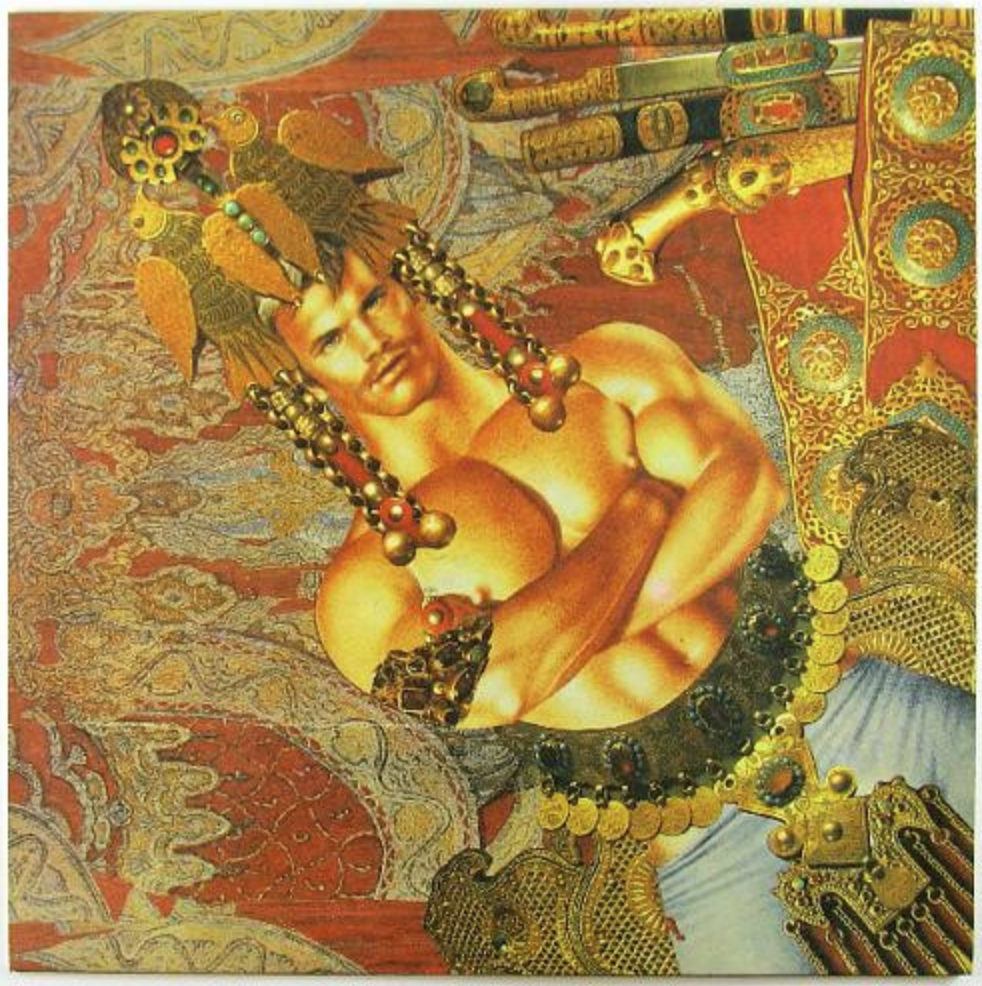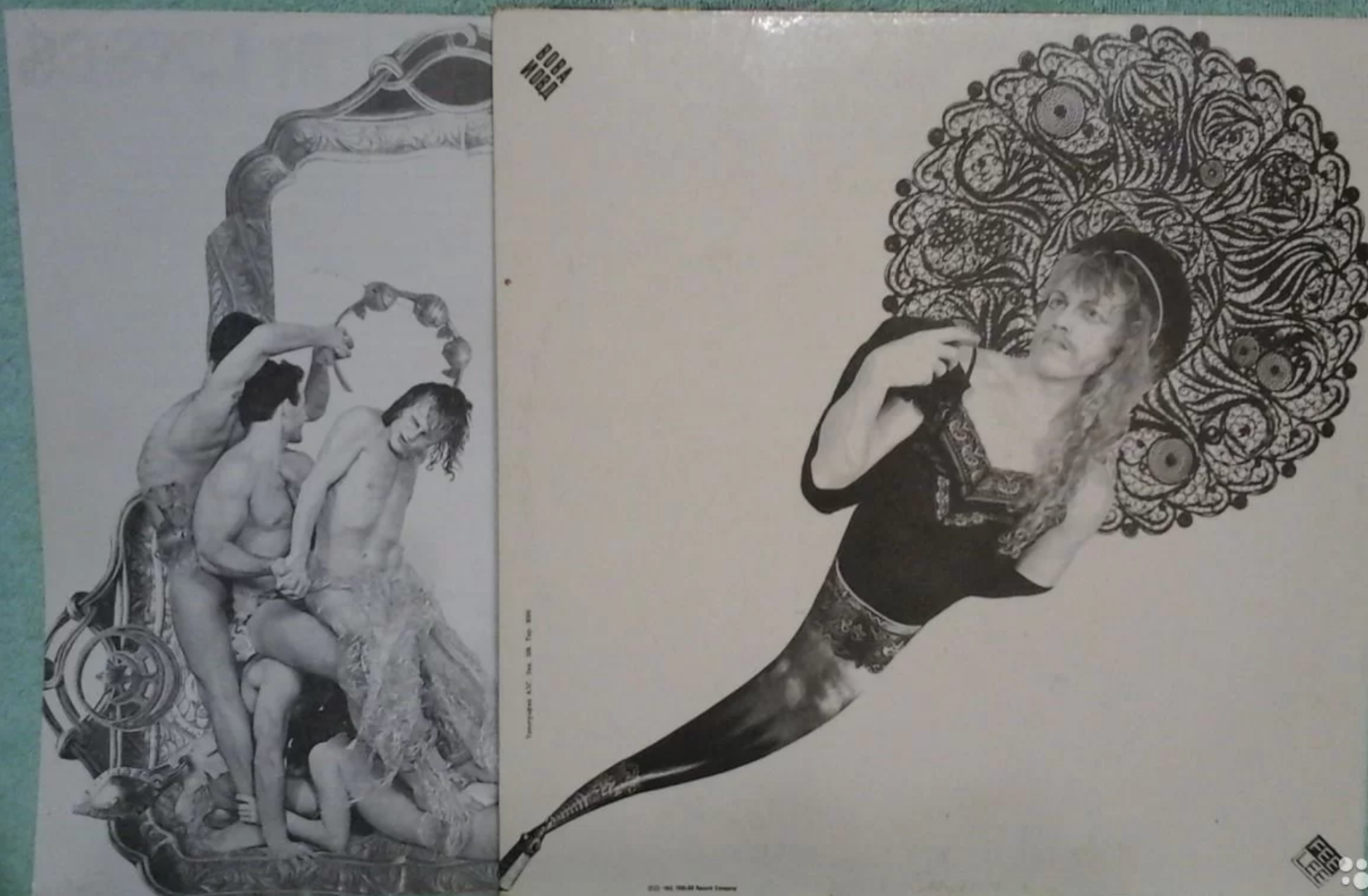Vladimir Vesyolkin, "Impossible Love"
[2 items]
The album art from this 1992 release is an example of an influential pop performer in 1990s Russia using homoerotic and/or gender-transgressive elements in their art and artistic persona. The front cover features one of Tom of Finland’s homoerotic paintings, and the back cover a photograph of singer Vladimir Vesyolkin (1961-) wearing a long-haired wig and lingerie. The inside sleeve shows a photograph of three nearly naked men sitting on top of one another.
Vesyolkin’s album and its artwork reflect a broader trend in mass-consumed art and music of the period: extravagant homoerotism and/or transgression of traditional gender boundaries in performances and artistic expressions, accompanied by greater caution within the unequivocally declarative medium of verbal language. At the time, some otherwise cis-gender/ heterosexual-coded pop artists, like the female duo t.A.T.U., incorporated “queer” elements into their performances to give them a transgressive edge. More complex is the case of gender-transgressive or homoerotic performance by artists who did experience homosexual desire or variance of gender identity. Artistic creations, including public personae, represented a testing ground for repressed desires, creating a zone for intensely public experimentation with alternative self-presentations under the protective veneer of artistic license.
For plausible deniability, even the most extravagant sexual or gender transgressions can be passed off as tropes not subject to literal interpretation, or as metaphors that transcend their literal meanings. When it comes to the verbal register, by contrast, these same artists exercised much greater caution. True, the title track on Impossible Love uses a masculine verb form for the love object (“you tricked me,” ty menia obmanul), but this is as far as Vesyolkin will go in terms of verbal suggestion of homoerotism. The singer’s band name, “Vova and the Organ of Internal Affairs” is playfully suggestive in a way that is intentionally difficult to pin down. Is the “organ of internal affairs” bureaucratese for some official agency? An anatomical organ of penetration? Whose? Vova’s? Someone else’s? Is it an organ that penetrates, or one that is penetrated?
Beyond this album cover, Vesyolkin’s public self-presentation in the late 1980s and early 1990s was emphatically transgressive. While on tour in Paris with the pop-music act Auktyon, he was nicknamed “the faun.” This reference to Vaclav Nijinsky’s modernist performance, set to Claude Debussy’s “Afternoon of A Faun” and created under the auspices of the Ballets Russes (led by Nijinsky’s then-lover, choreographer Sergei Diaghilev)—signals a continuity between pre- and post-Soviet queer identity and cultural life. During the Auktyon tour, Vesyolkin famously performed a dance in which he moved only his exposed buttocks, scandalizing the press back home in the USSR. He was then featured as “female vocals” on Auktyon’s album Ass (Zhopa) in 1990.
During this same period, Vesyolkin agitated for the repeal of Article 121, the anti-sodomy law in Russia’s criminal code; described himself as bisexual in an interview with the magazine SPID-Info; and made public invitations to “jerk-off parties” at a porno salon. Yet in the Putin era, Vesyolkin would claim that all the homoerotic and gender-variant aspects of his public persona were mere performance. In this interpretation, his previous actions did not accurately represent his sexual experience or gender identity, but were mere metaphors for the defense of freedom of self-determination and self-expression understood in the broadest possible terms.

